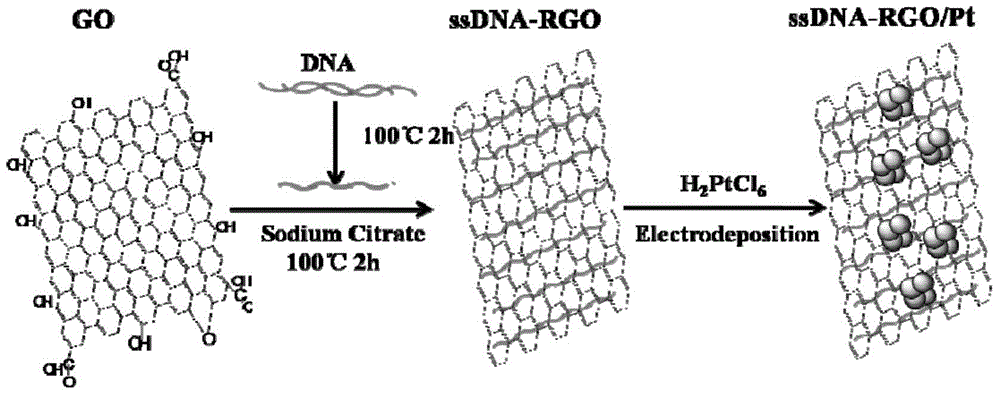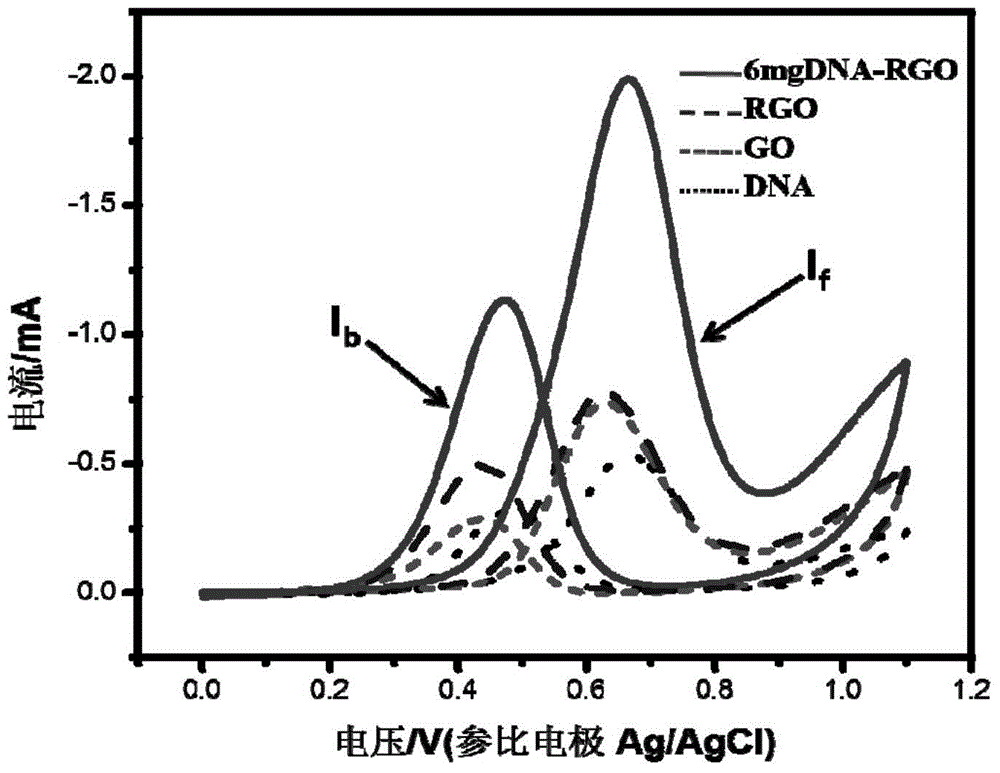Single-stranded DNA/reduced graphene/cottony platinum nanoparticle as well as synthesis and application thereof
A graphene and platinum nanotechnology, applied in electrical components, battery electrodes, circuits, etc., to achieve superior catalytic active surface area, high catalytic activity and anti-poisoning ability, and improve the catalytic and anti-poisoning properties of materials
- Summary
- Abstract
- Description
- Claims
- Application Information
AI Technical Summary
Problems solved by technology
Method used
Image
Examples
Embodiment 1
[0026] This embodiment is carried out on the Electrochemical CHI 660D type electrochemical workstation (Shanghai Chenhua Instrument Co., Ltd.); the field emission scanning electron microscope spectrum adopts Hitachi S-4800 (Tokyo, Japan) field emission scanning electron microscope, SK2200H ultrasonic instrument ( Shanghai Kedao Ultrasonic Instrument Co., Ltd.).
[0027] The reduction graphene modified by single-stranded DNA is the preparation method of the cotton-like platinum nanoparticles of the substrate as follows:
[0028] (1) Use the optimized Hummer method to synthesize graphene oxide.
[0029] (2) Measure 4 to 7 mg of protidine DNA sodium salt and dissolve it in 10.0 ml of secondary deionized water, heat it at a high temperature of 100°C for two hours, add 5 ml of 1 mmol per ml of graphene oxide to the DNA solution, and stir Uniformly, add 2 milliliters of trisodium citrate, reduce for two hours, cool and add 0.4675 grams of sodium chloride (NaCl) solid, precipitate a...
PUM
 Login to View More
Login to View More Abstract
Description
Claims
Application Information
 Login to View More
Login to View More - R&D
- Intellectual Property
- Life Sciences
- Materials
- Tech Scout
- Unparalleled Data Quality
- Higher Quality Content
- 60% Fewer Hallucinations
Browse by: Latest US Patents, China's latest patents, Technical Efficacy Thesaurus, Application Domain, Technology Topic, Popular Technical Reports.
© 2025 PatSnap. All rights reserved.Legal|Privacy policy|Modern Slavery Act Transparency Statement|Sitemap|About US| Contact US: help@patsnap.com



